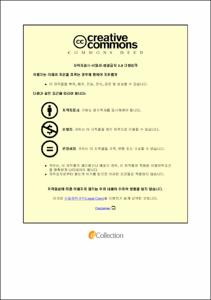타이타늄 합금의 유동성 및 금속-주형반응성에 관한 연구
- Abstract
- Titanium alloys are widely used in the fields of aerospace, petrochemical, biomedical and sports industries because of low density, high specific strength and excellent corrosion resistance. Investment casting is the cost competitive process to fabricate complex shapes. However, investment casting of titanium alloys faces with a challenge to minimize casting defects such as porosity, surface reaction layer, so called α-case because of poor fluidity and high reactivity of titanium alloy melt. In this study, effect of alloy system on the fluidity and surface reaction by metal-mold reaction of titanium alloys were studied. Three different alloys, pure titanium(hereinafter noted as CP-Ti), Ti-6Al-4V(T64), Ti-6Al-4Fe-0.25Si(TAFS) were investigated in this study. The fluidity tests were conducted by using spiral type mold and then, we analyzed surface reaction layers by metal-mold reaction. ISM(Induction Skull Melting) was used for melting and casting of the alloys and investment casting was conducted with ZrSiO4 mold. The fluidity length of CP Ti was the longest and that of Ti-6Al-4Fe-0.25Si was the shortest. On the contrary, The thickness of surface reaction layer(α-case) of Ti-6Al-4Fe-0.25Si was thinnest and that of CP Ti was the thickest. In addition, we will discuss microstructure, hardness profile, SEM/EDS analysis, X-ray diffraction analysis of the casting specimens of titanium alloys
- Issued Date
- 2016
- Awarded Date
- 2016. 2
- Type
- Dissertation
- Publisher
- 부경대학교 대학원
- Affiliation
- 부경대학교 대학원
- Department
- 대학원 금속공학과
- Advisor
- 강창룡
- Table Of Contents
- 목 차
Abstract i
제1장. 서론 1
제2장. 이론적 배경 3
2.1 타이타늄의 개요 및 특성 3
2.2 타이타늄합금의 용해기술 7
2.2.1 진공아크 재용해 7
2.2.2 유도스컬용해 8
2.3 타이타늄 정밀주조 9
2.3.1 Investment casting 9
2.4 타이타늄합금의 주조성 평가기술 10
2.4.1 유동성평가 10
2.4.2 반응성평가 11
제3장. 실험방법 12
3.1. Spiral type 12
3.1.1 유도스컬용해 및 주조 12
3.1.2 표면반응층 미세조직 분석 14
3.1.3 표면반응층 경도분석 14
3.1.4 주조표면의 미세조직 및 성분분석 14
3.2. Plate type 16
3.2.1 유도스컬용해 및 주조 16
3.2.2 표면반응층 미세조직 분석 18
3.2.3 표면반응층 경도분석 18
제4장. 결과 및 고찰 19
4.1 타이타늄 합금의 금속-주형 반응성평가 19
4.1.1 나선형의 금속-주형 반응성평가 19
4.1.1.1 나선형 주입부분 19
4.1.1.2 나선형 끝부분 29
4.1.2 판형의 금속-주형 반응성평가 32
4.2 타이타늄 합금의 유동성평가 36
4.2.1 표면장력에 따른 유동성평가 36
4.2.2 미세조직에 따른 유동성평가 41
4.3 타이타늄 합금의 충전성평가 48
제5장. 결론 51
제6장. 참고문헌 52
- Degree
- Master
- Files in This Item:
-
-
Download
 타이타늄 합금의 유동성 및 금속-주형반응성에 관한 연구.pdf
기타 데이터 / 2.36 MB / Adobe PDF
타이타늄 합금의 유동성 및 금속-주형반응성에 관한 연구.pdf
기타 데이터 / 2.36 MB / Adobe PDF
-
Items in Repository are protected by copyright, with all rights reserved, unless otherwise indicated.